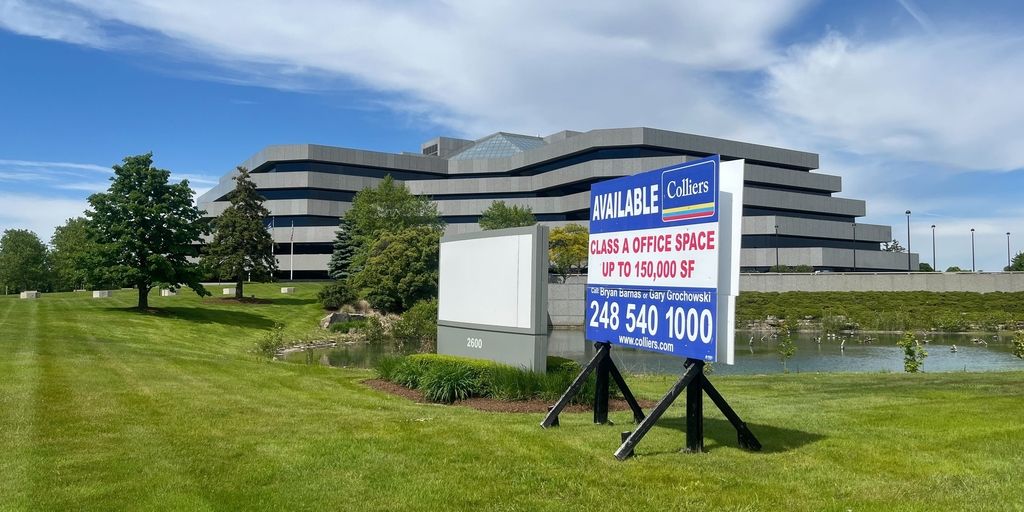
Credit: Kirk Pinho/Crain’s Detroit Business
The Bank of America Building/Somerset Atrium in Troy.
A New York City-based landlord swooped into metro Detroit in 2017 and dropped $74 million on the storied Bank of America office building in Troy.
Eight years later, the building is worth barely one-third of that, appraisers say, and its owner, Sol Gutman, is deeply underwater on his and his investors’ commercial mortgage-backed securities loan.
It showcases yet another sign of pesky but serious stress in the office market.
With the side effects of the COVID-19 pandemic still lingering, four major office buildings in metro Detroit are squarely underwater on their CMBS loans — and their owners are in various states of attempting to settle the debts.
Not only is the Bank of America building worth well less than what its ownership owes, but so are the 696 Centre in Farmington Hills, as well as Southfield’s Omni Officentre and Maccabees Center.
All told, the buildings — which total more than 1.4 million square feet — have plunged in value by more than 71% and are worth just over half of what they owe on their mortgages, according to a Crain’s analysis of CMBS and property data from New York City-based Trepp LLC and Washington, D.C.-based CoStar Group Inc.
Of course, the suburban buildings are not alone in their predicament. In fact, the Detroit Metropolitan Statistical Area is performing better than the country as a whole. Slightly more than 4% of the region’s outstanding CMBS balance is underwater, while nationwide it’s about 9.6%, according to Trepp data.
There is some $500 billion in commercial real estate loans of all kinds — not just commercial mortgage-backed securities — maturing this year and some 14% of that is for properties that are underwater, with office and multifamily properties particularly in stress, according to data from New York City-based MSCI Inc., formerly a division of Morgan Stanley.
The office market has faced unprecedented challenges the last few years as a result of the hybrid work revolution ushered in by the global pandemic.
However, said Dennis Bernard, founder and president of Southfield-based commercial real estate finance company Bernard Financial Group, there are always a handful of properties that are underwater on their loans.
And, in fact, generally very specific types of office buildings are facing the most challenges, Bernard said: Those with large floorplates designed for large users, and those that had large single tenants bail from them, as there are precious few, if any, occupants like that to replace them.
“Everyone needs to take a breath,” Bernard said.
And while office landlords have taken their licks over the last five-plus years, those with large Class A properties not only in the suburbs but also downtown should emerge largely unscathed by their current lenders working with them or in many cases being able to refinance and move forward, according to Bernard.
He also said the Detroit market, along with other Midwestern cities with the exception of Chicago, have tended to fare better from an office perspective than cities like Seattle, Portland and Austin because the region hasn’t faced the same type of challenges like skyrocketing housing costs in a short period of time that have contributed to putting their downtowns into distress.
Here are snapshots of the four properties and their current financial situations.
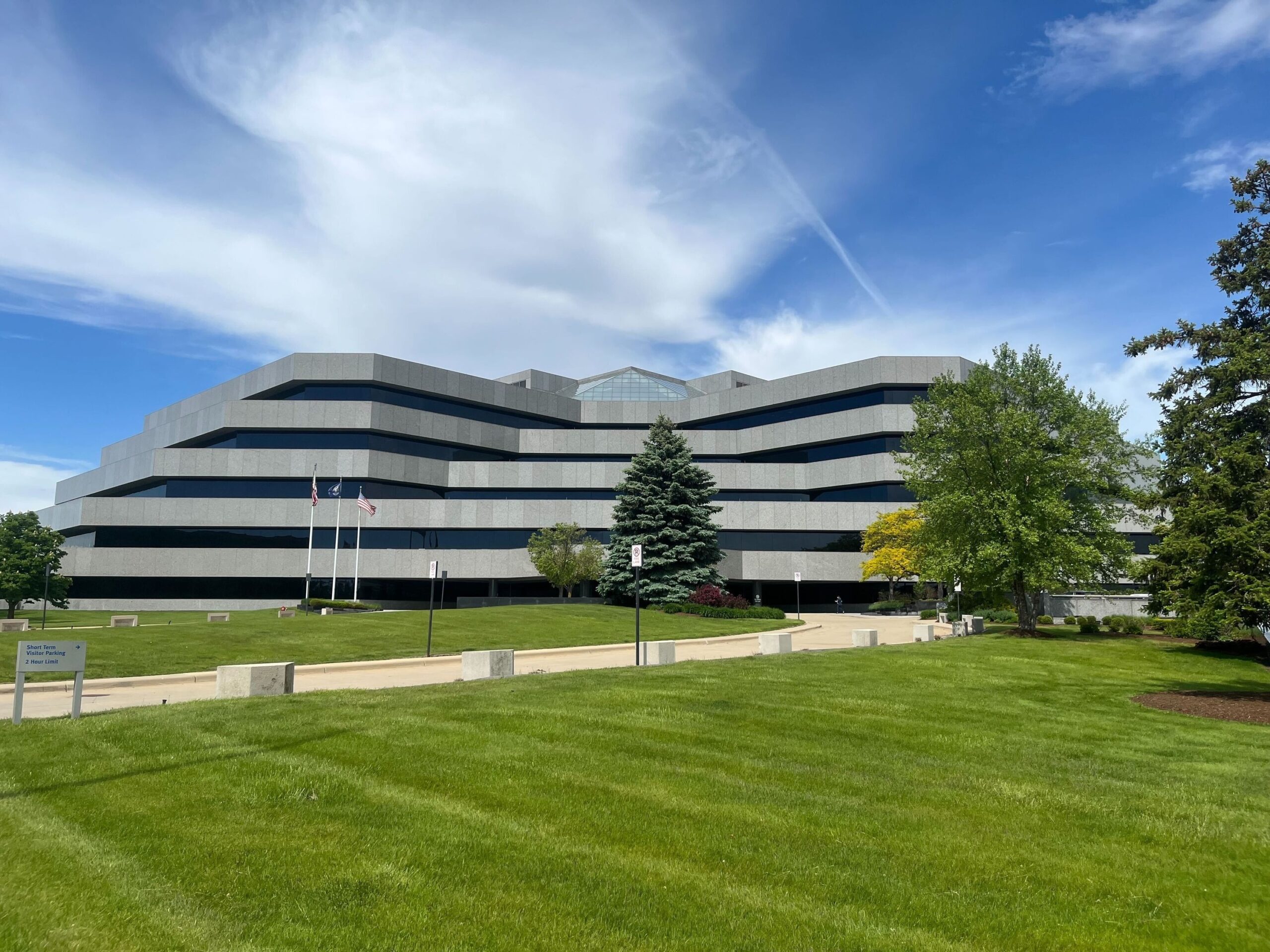
Credit: Kirk Pinho/Crain’s Detroit Business
The Bank of America Building/Somerset Atrium in Troy.
Gutman needs to find a way to reconcile the $24.9 million value of the former Bank of America Building, now known as the Somerset Atrium — compared to $79.2 million when he bought it — while still owning almost $42.1 million on a $47.6 million Citibank CMBS loan.
In an emailed statement, Gutman said three new leases totaling more than 45,000 square feet have been signed there are active negotiations to divide up and occupy another 86,000 square feet. He also said ownership is “evaluating the development of the site’s excess land.”
Gutman also said he believes the appraised value of the Bank of America Building is inaccurate, saying that the replacement cost for the building would be north of $600 per square foot because of the quality incorporated when it was built.
“Even applying conservative assumptions, at just $100 per square foot, the building’s value would approach $45 million — a number that doesn’t fully capture the long-term value of the land and infrastructure in place,” Gutman wrote, adding that ownership is working on a loan extension and “remains confident in the long-term trajectory of this asset.”
In January 2024, brokers launched an effort to rebrand the Bank of America Building after the bank scattered its roughly 350 employees across 145,000 square feet into three other locations around metro Detroit. Its formal name is now the Somerset Atrium.
The building is somewhat of a local legend. It was built by Standard Federal Bank, which later folded into LaSalle Bank, which later then folded into Bank of America.
When it opened, Standard Federal employees couldn’t bring anything to eat or drink to their workspaces — including bottled water, lunch or coffee — because of fear of crumbs or stains.
It had been dubbed the “Taj Mahal” or “Fort Federal” because of the rules and the big vision for the building by the late Thomas Ricketts, the former president and CEO of Standard Federal. Subsequent bank executives worked to change that vision from a building that was part art museum-part bank office to something more modern.
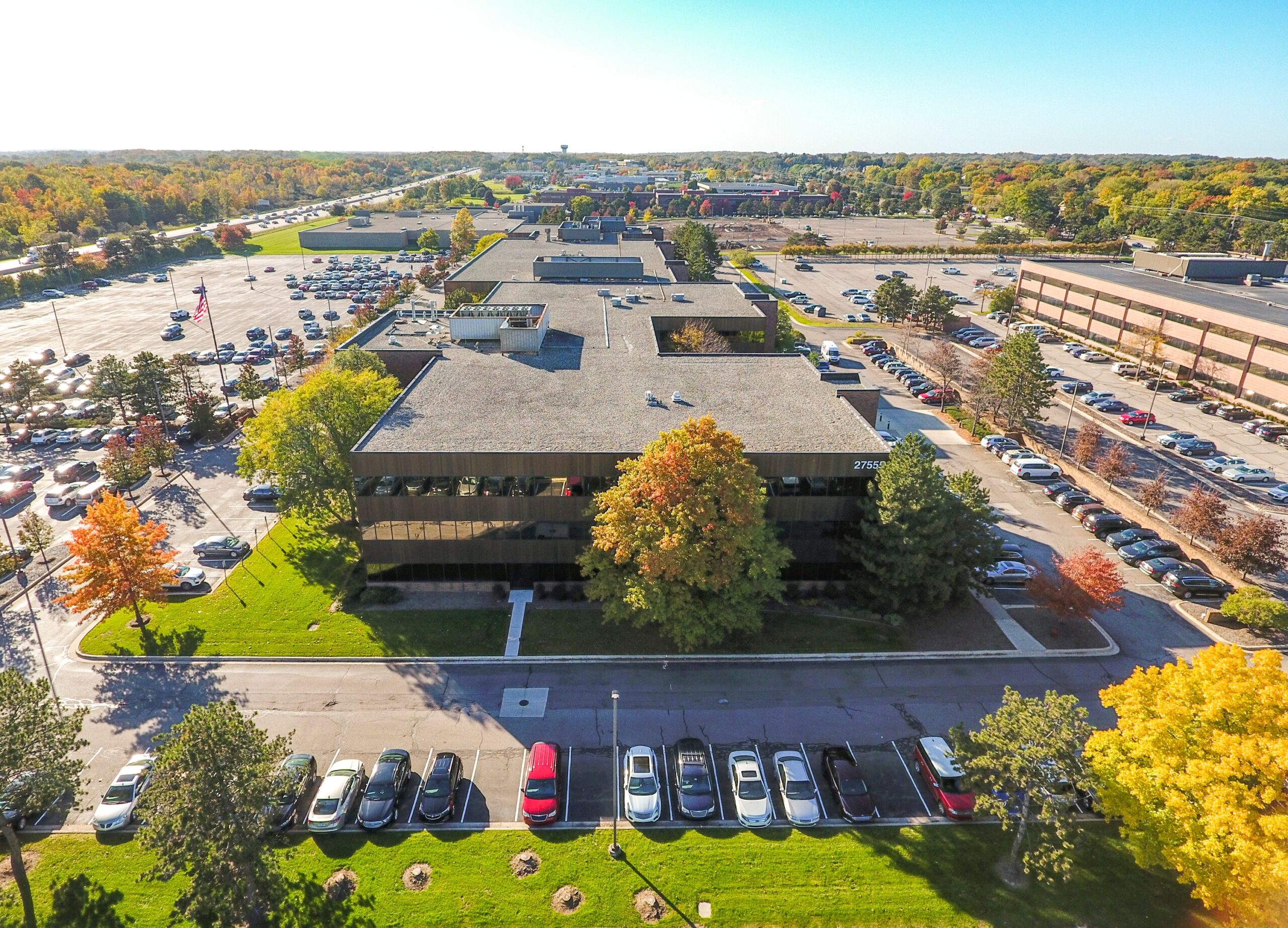
Credit: CoStar Group Inc.
The 696 Centre in Farmington Hills.
The 696 Centre office property in Farmington Hills may be underwater on its loan, but ownership has a vision for the future.
The building, located at 27555 Farmington Road, has lost three-quarters of its value and was appraised in September for $6 million. The outstanding balance on its CMBS debt is about $14.2 million, according to Trepp data.
Gabe Schuchman, managing director of Bingham Farms-based Alrig USA LLC, which owns the building, said his team is working on a mixed-use concept to reposition it.
He said the property has been “seeing a lot of leasing velocity” starting at the beginning of the year, as “different tenants have figured out their long-term strategies.”
For the 696 Centre itself, the long-term strategy is to bring more than 300 multifamily units to the surface parking that surrounds it. Plans have been submitted to the city for their review.
“We are excited about repositioning this asset,” Schuchman said. “We bought it in 2012 or 2013 and repositioned it then, and we are excited to reposition it again … Our view is that the building has a tremendous amount of upside and we are excited to be long-term owners.”
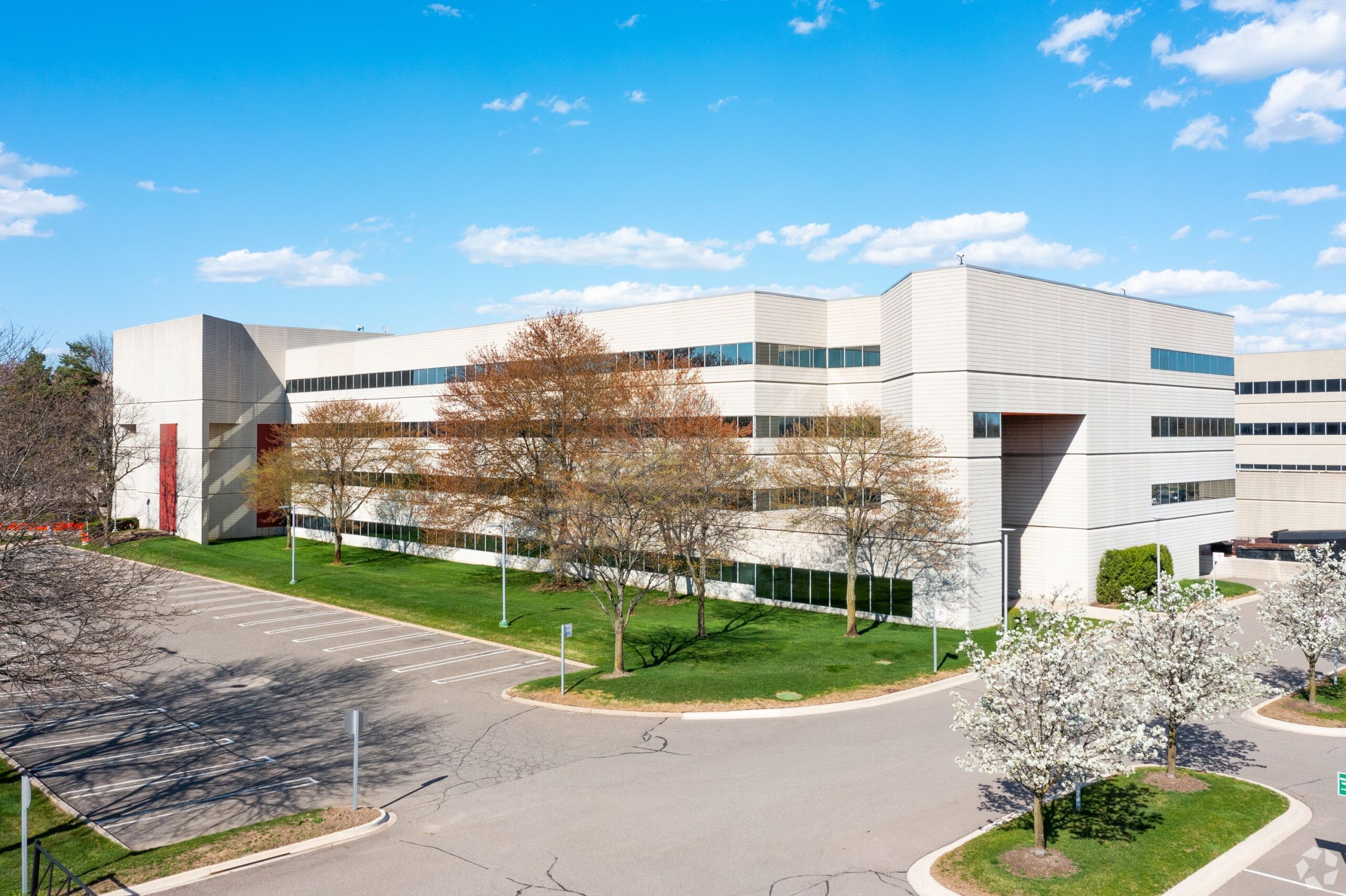
Credit: CoStar Group Inc.
The Omni Officentre in Southfield.
This two-building complex on Northwestern Highway appears to be coming under new ownership, although it had been owned for years by an entity connected to Southfield-based Nemer Property Group Inc.
When it took out its CMBS loan in early 2016, the building was valued at $24 million, although today it sits at just $4.75 million, according to data from Trepp. The outstanding balance is about $14.1 million of the $15.5 million origination amount.
Loan commentary posted to CoStar says that Oakland County Circuit Court has signed off on the sale of the property at auction in early April, although closing wasn’t scheduled until May 16. It’s not known if the sale has closed.
An email was sent to a broker representing the Nemer-connected ownership group seeking comment, as well as to one of the attorneys on the Oakland County court case.
Court filings from April say that the auction buyer is the United Michigan Muslim Association with a high bid of $4.95 million.
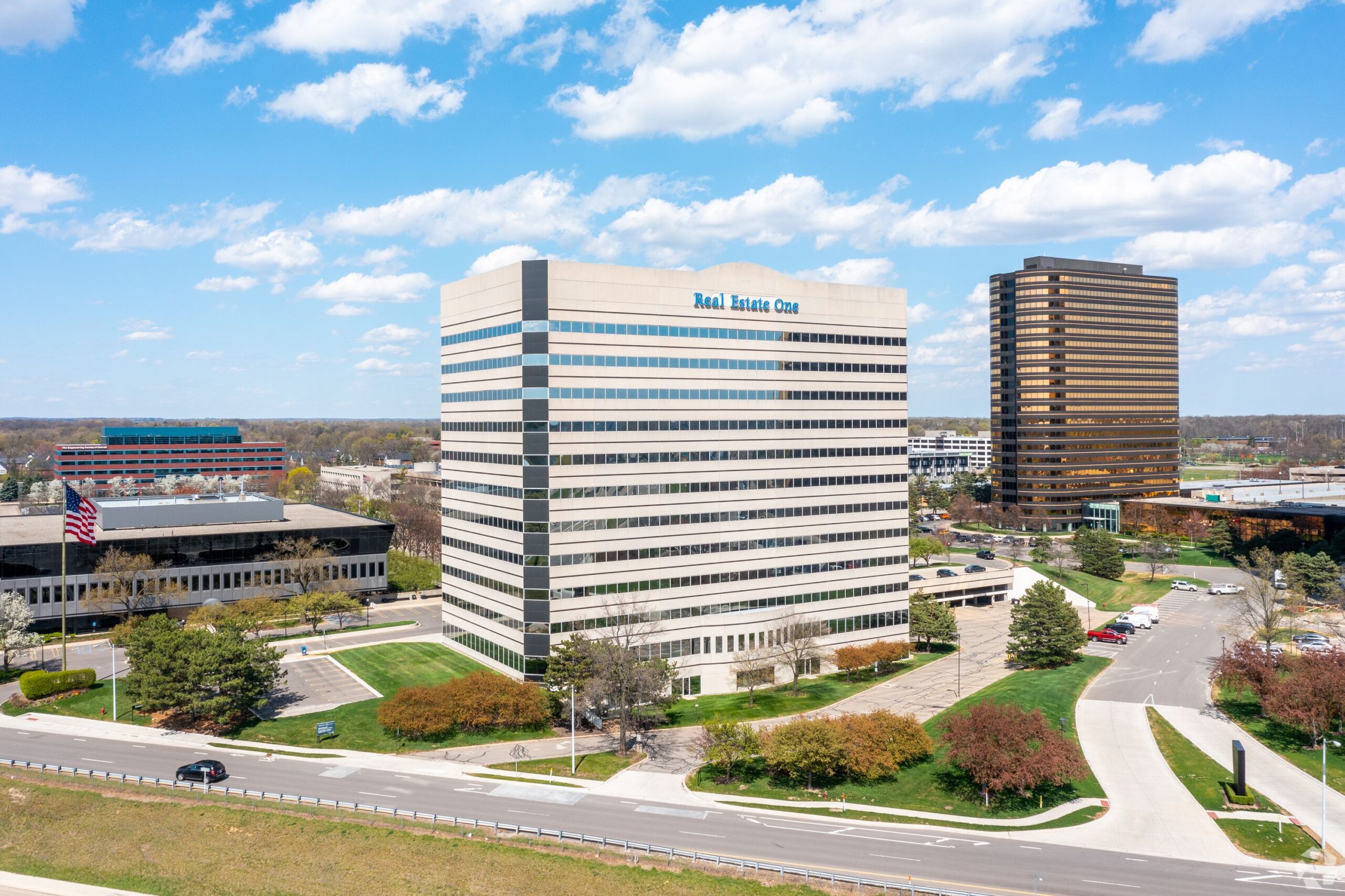
Credit: CoStar Group Inc.
The Maccabees Center/The Century in Southfield.
A few years after the Maccabees Center in Southfield also rebranded (now referred to as The Century), it faces an uphill battle.
With an appraised value of one-third of what it was, the building owned by Livonia-based Schostak Bros. & Co. is underwater with a remaining balance of $17.2 million on its $21.5 million CMBS loan, according to data from Trepp. It was most recently appraised for $9.7 million in November but was valued at $30.7 million in 2014.
An email was sent to a Schostak Bros. executive on Tuesday seeking comment.
Like the Bank of America Building, the Maccabees Center underwent a name change in recent years, taking on the name The Century in honor of Schostak Bros.’ centennial anniversary in 2020.
It also received a refresh as part of the rebranding, Crain’s reported at the time.
Owning a home is a keystone of wealth… both financial affluence and emotional security.
Suze Orman